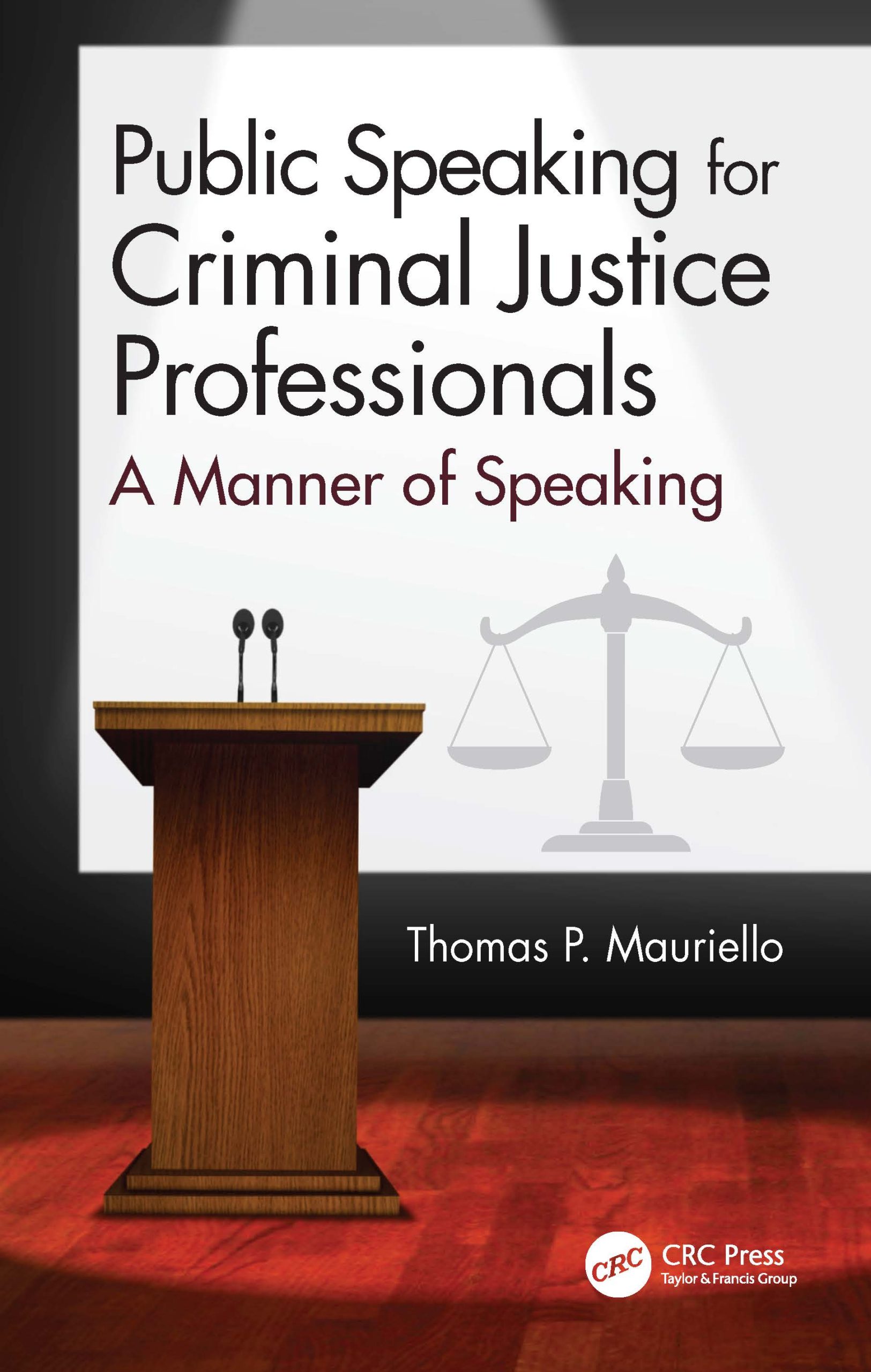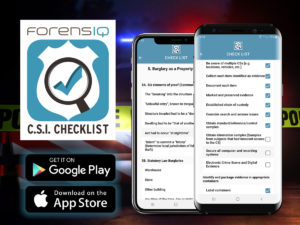New Digital Criminalistics Textbook
Great River Learning announces the publication of their all new digital textbook, authored by University of Maryland professor, Thomas P. Mauriello. This first of a kind etextbook integrates all the content, video lectures, interactive exercises, testing, and evaluation activities needed to present curriculum in a manner best received by today’s students. It is combined with practical exercises associated with the CCJS Crime Laboratory and Mock Crime Scene facility. It is being used for the first time this semester in Professor Mauriello’s classes and will be marketed nationally in the spring.
ForensicWeek.com Show – Topic “Managing Forensic Laboratories” – Feb. 12th
The ForensicWeek.com Webcast TV Show is airing Episode 71 this Thursday, February 12, 2015 at 7 P.M. (EST). The topic “Managing Forensic Laboratories.” Get a realistic behind the scenes look at managing a forensic laboratory from two distinguished forensic scientists, Director Steven O’Dell, Baltimore City Crime Laboratory and Dr. Jay Tobin, Associate Professor of Forensic Science, Stevenson University, both who have made it a career to lead large urban city and state level forensic laboratories. Join host, Tom Mauriello and the ForensicWeek crew on www.ForensicWeek.com brought to you by ForensIQ, Inc. Thank you for watching!
Va Budget Cuts Hit Forensic Lab Analysis of Trace Evidence
Virginia Department of Forensic Science is budget cutting to and reducing analysis of gunshot residue and several other kinds of trace evidence. For the full article go to the website below:
http://www.forensicmag.com/news/2014/12/va-budget-cuts-hit-forensic-lab-analysis-trace-evidence
[Abstract written by Mercedes Quick, ForensIQ Intern, 12/01/14]
3D Prints Takes Over Traditional Clay Modeling
Traditional Clay Modeling in Forensic Facial Reconstruction is being replaced by 3D Printings. The process consists of recreating the face of a person with only the skull as a reference. When making a clay model you had to be an artist schooled in anatomy, anthropology, and ontology. Even though clay models have been used for many years their is a major problem with the current practice of forensic facial reconstruction and it’s that the skull must be used and can, in the process, potentially be damaged. This machine is called Z Scanner where it makes a scan of the skull, then a Z650 3D printer is used to produce a lifesize replica of the skull. For more information go to the link below.
[Abstract written by Mercedes Quick, ForensIQ Intern, 10/27/14]
Forensic science solves mystery of Richard III’s death
Richard III was the last king of England to die in battle, over 500 years ago. He was discovered buried under a parking lot in Leicester, England, in September 2012. DNA tests confirmed its identity five months later. Today researchers use modern forensic science to figure out which injuries likely caused his death. They did this by using whole body CT scans and micro-CT imaging of injured bones to examine signs of trauma to the skeleton. For additional information, please go to website below.
http://www.cbsnews.com/news/forensic-analysis-of-richard-iii-death-solves-mystery/
[Abstract written by Mercedes Quick, ForensIQ Intern, 10/14/14]
University of Mississippi Forensic Chemistry Honored as Leading National Program
ForensicColleges.com has named the forensic chemistry program at the University of Mississippi one of the finest in the nation. U.S. News and World Report comprehensive surveys, reputation among professionals and peers, and cost and opportunities for experience rank the Forensic Chemistry program in the top 13. UM’s forensic chemistry program is the only one in the state and among only three forensic chemistry programs in the south and six nationally accredited by the Forensic Science Educations Programs Accreditation Commission.
The UM forensic chemistry program contains a demanding science-based curriculum that prepares graduates for versatile careers in forensics laboratories. Although the University of Mississippi only offers a B.S. in forensic chemistry, a major difference that sets this program aside from all others is that all students in the program are enrolled in a summer internship with a local criminal laboratory. Because of the hands-on experience, more than 70% of graduates find employment upon graduation, many of them working in local and federal crime labs.
Want to read more? Click here to view the entire article!
Source: University of Mississippi News
[Abstract written by Noel Andres, ForensIQ Intern, 5/8/14]
Lab Uses Wrong Chemical in 2,500 Methamphetamine Test in Santa Clara County
Earlier this year Mark Burry, crime analyst at Santa Clara County Lab, used the wrong chemical to conduct preliminary methamphetamine tests on the blood samples of 2,500 arrestees.
In January, Burry apparently grabbed the wrong solution off a shelf and loaded a machine with a more sensitive compound. Another analyst discovered the mistake in March and after retesting the samples, only seven tests had shown a false positive. Fortunately no one is in custody because of a mistaken test. The Santa Clara County Lab is taking extra precautions to better label it chemicals and is conducting a wholesale review of procedures.
Because of his mistake, Mark Burry is no longer assigned to drug testing at Santa Clara County Crime Lab. District Attorney Jess Rosen stated, “Human error will always exist within the criminal justice system; however, it is vital that we quickly find any mistakes and quickly fix them. We did that in this case.”
Interested in reading more? Click here to view the entire article!
Source: San Jose Mercury News
[Abstract written by Noel Andres, ForensIQ Intern, 5/8/14]
“Shooting Reconstruction: The 4 Elements of Trajectory” – Free Online Course
RTI International will be holding a free online course on Thursday May 22 at 1pm Eastern time. This course is called “Shooting Reconstruction: The 4 Elements of Trajectory”. It will be presented by Aaron Brudenell and will be approximately 70 minutes. He will discuss how the path of a bullet hole has 4 main elements that require measurement, estimation, or other determination where possible. This introduction to shooting reconstruction course will address these four elements independently and then assessed as a group in examples and case studies.
RTI International also offers free archived training that can be viewed at anytime.
Click here to register!
Click here to view free archived training
Source: RTI International
[Abstract written by Alicia Terrell, ForensIQ Intern, 050814]
Upcoming Technology Assisting in Arson Investigations
When it comes to arson cases, one of the most time consuming processes involved is determining the cause of a deliberately set fire. University of Alberta researcher James Harynuk and Royal Canadian Mounted Police scientist Mark Sandercock are taking steps towards simplifying this process by teaming up to develop a computer program that can sort through the chemical clues left behind by arson. Using gasoline chemical samples from 232 samples drawn from fire debris in cases under investigation in Canada, a filter was developed that isolated the signature of gasoline and was used to determine the presence of gasoline in the debris sample, and thus indicate if it could have been the source, or one of the sources, of the fire. Sandercock stated that “By getting the laboratory results back quickly, investigators can use this information to ask the right questions when interviewing people or evaluating other evidence, which will help them resolve the case more quickly by pointing them in the right direction.” The program has yet to be given a name but is currently in the process of gathering support for commercialization as well as testing on other less common flammable fluids.
Read the full article here.
[Abstract Written by Walter Tates, Forens-IQ Inc. Intern, 050114]
Forensic Class at Boy’s Latin School of Maryland Uses Maggots For Criminal Investigation
With talented faculty alongside, students at the Boy’s Latin School of Maryland learn the core values of courage, integrity and compassion while striving for academic and personal excellence. Jim Haluck, instructor of an honors forensic course at The Boy’s Latino School of Maryland, helps students examine the scientific techniques used by criminal investigators in the laboratory to solve crimes.
A new lab entitled Sarcophaga bullata, which deals with meat and maggots in an attempt to determine if drugs were used by a deceased human body, has recently made the news in the forensic world. Instructor Haluck explained, “The boys in honors forensic sciences are loading their test tubes with drug laced ground beef and larvae of Sarcophaga bullata flies. These flies lay eggs on deceased humans and can be used to determine time of death and any drug use by the deceased individual. After about three days of feeding on the drug-laced meat, the boys will extract the maggots and grind them to prepare their body fluids for thin-layered chromatography analysis. The samples taken from maggots will be compared to reference drug Rf values for identification.”
The forensic class at the Boy’s Latin School of Maryland places the students into the shoes of forensic entomologist, helping them obtain a better understanding of the work these professional provide to the field of forensic science.
Click here to read more about the Boy’s Latin School of Maryland and the Forensic Class!
Source: The Boys’ Latin School of Maryland
[Abstract written by Noel Andres, ForensIQ Intern, 4/17/14]
AI (Artificial Intelligence) Assistance – In Crime Labs
Under staffing is a constantly talked about problem in law enforcement, as well as in crime labs. The Fort Worth police crime lab is subject to this problem and has resorted to artificial intelligence for assistance. The crime lab has purchased a $92,000 robot to assist them with lab tasks such as DNA analysis, speeding up the process and saving them money.
Click here to read the full article.
[Abstract Written by Walter Tates, ForensIQ Inc. Intern. 041714]
ForensicWeek.com Show – examines “Forensic Geology and Underwater Crime Scenes.”
| ForensicWeek.com is airing Episode 58 this Thursday, April 24th at 7:00 PM (EST). The topic for discussion is “Forensic Geology and Underwater Crime Scenes.” The show will examine all the “dirt” there is to know about forensic geology and the real forensic science behind underwater crime scene investigations. Special guest, Dr. Joseph A. Finley, retired FBI Agent, Mineralogy Unit, FBI Crime Laboratory Division and member of their Underwater Search and Evidence Response Team, will share his knowledge and expertise in these fields. So join host, Tom Mauriello and student interns LIVE and archived on www.ForensicWeek.com. Thank you for watching! |
Want to wear logo apparel with ForensicWeek.com, ForensIQ or UM-CCJS logos, then go to http://forensiq-inc.com/store/ and select from the ForensIQ Online Store.






